Rig measurements are following the WS Equipment Rules of Sailing (ERS) with only a couple of modifications specific for offshore boats:
- Mast datum point is at the top point of the section at the foreside of the mast
- Rigging point is attachment of the forestay to the mast, or the intersection of the extended forestay with the mast structure.
Mast datum point and Foretriangle base
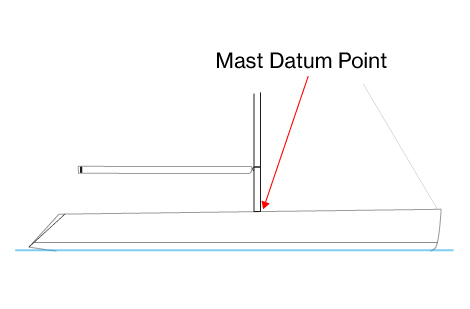 Mast datum point
Mast datum point
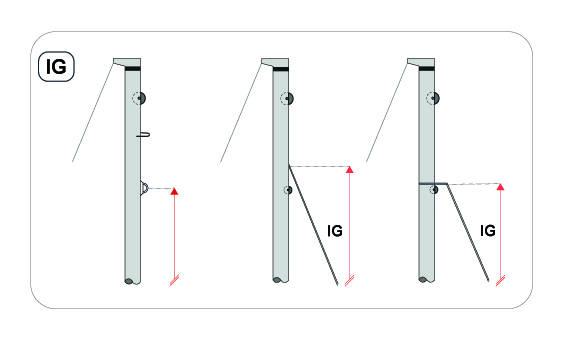 Rigging point
Rigging point
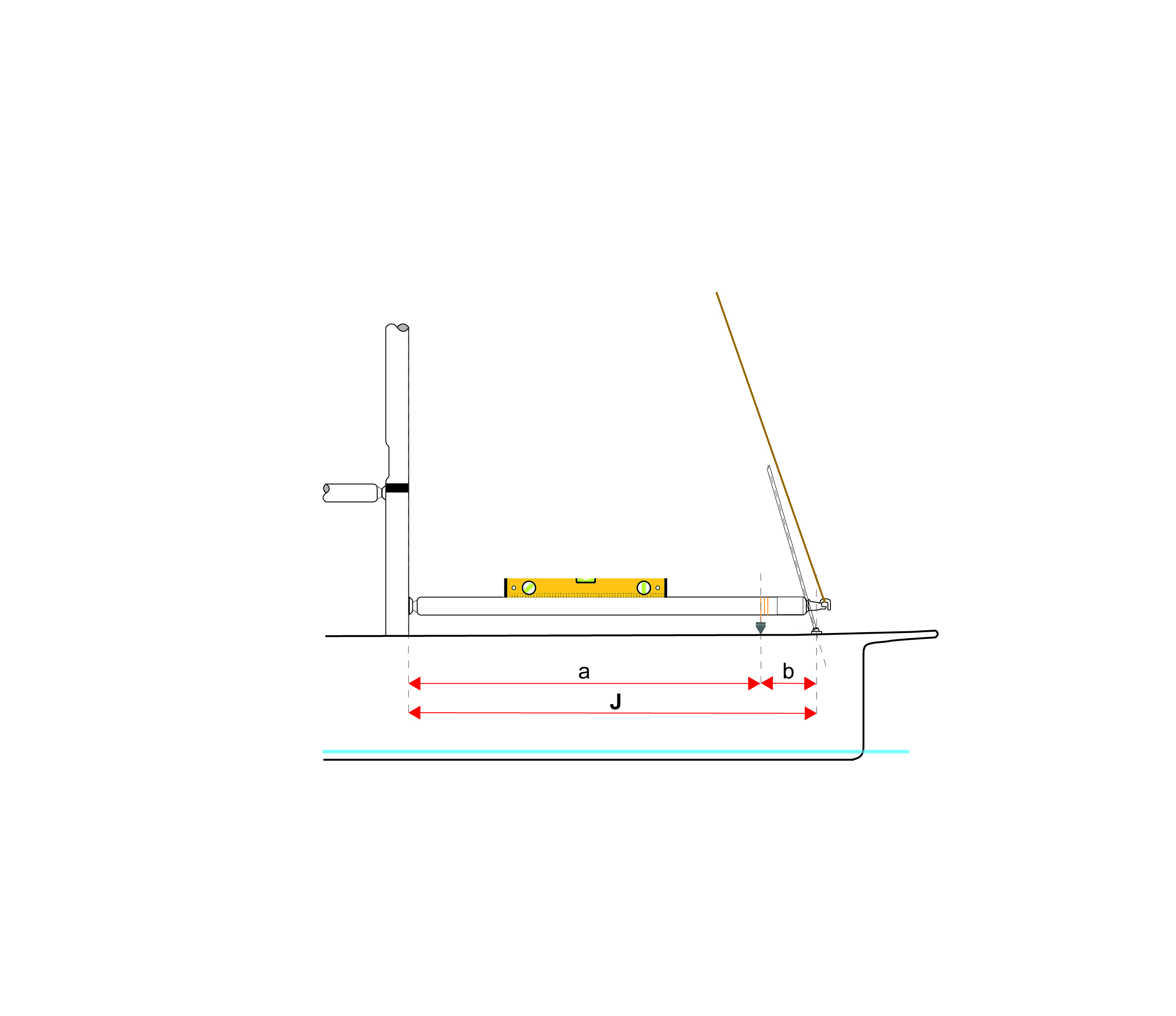
BAS and J with SFJ measurements are defining vertical and longitudinal position of the mast and sail plan relative to the hull. BAS is the height from the mast datum point to the boom or lower black band on the mast. It is used also as a reference point for the halyards hoist measurements on the mast. J is probably the best-known measurement on boat, since it is used to define the size of headsails. It is defined as the horizontal distance between the front side of the mast and the intersection of the forestay with the deck. SFJ then determines the distance of the forward point of J to the actual foremost point on the hull.
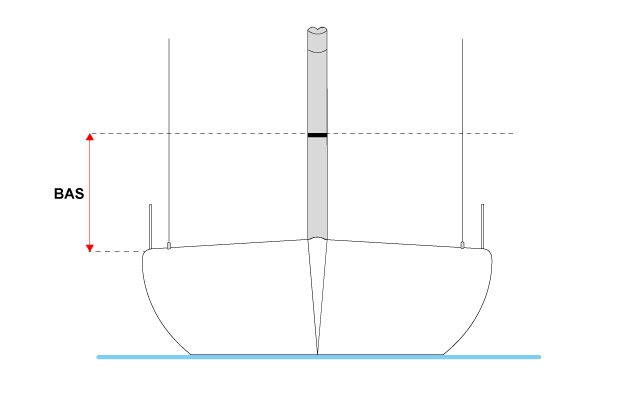 BAS measurement
BAS measurement
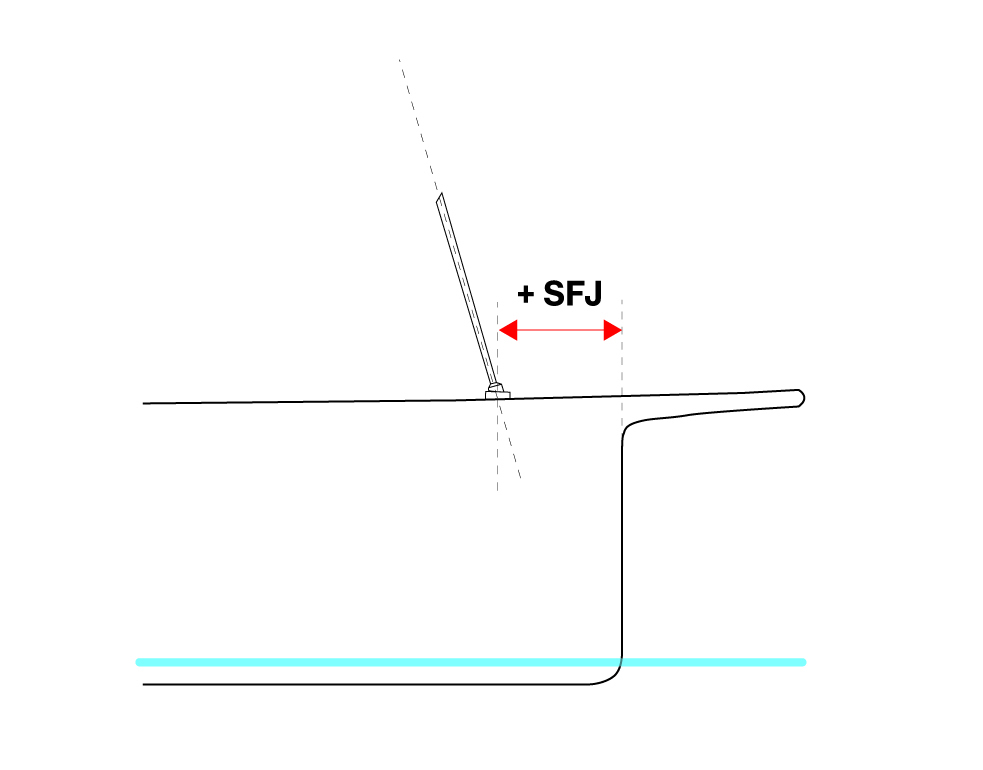 SFJ measurement
SFJ measurement
P is distance between the black bands and the mast that are limiting the position of the mainsail luff - while racing the mainsail luff must be between these bands. In the absence of the upper black band, P is measured to the upper part of the main halyard sheave. IG is defined as the height of the foretriangle and is the vertical distance from the mast datum point (at the sheerline at the mast) to the forestay attachment to the mast. Similar to IG, ISP is the spinnaker halyard height and is the maximum height that the head of the spinnaker or headsail set flying can be hoisted.
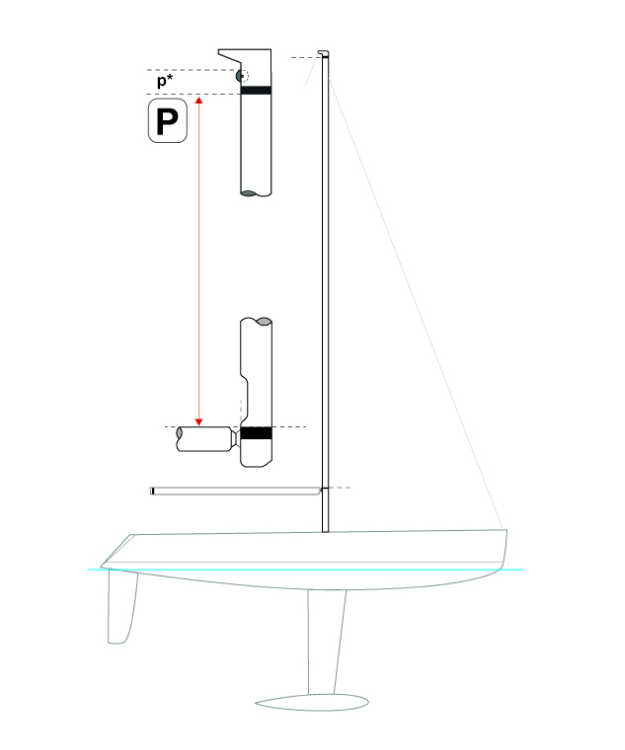 P measurement
P measurement
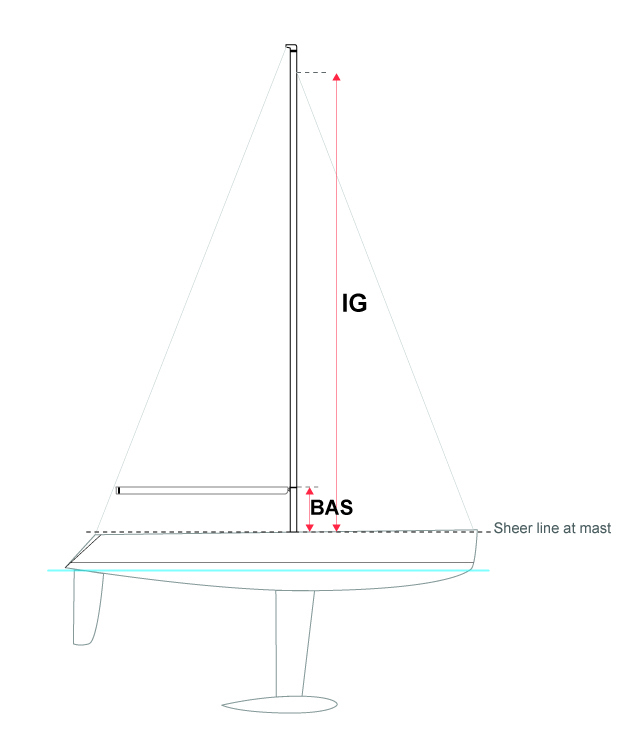 IG Measurement
IG Measurement
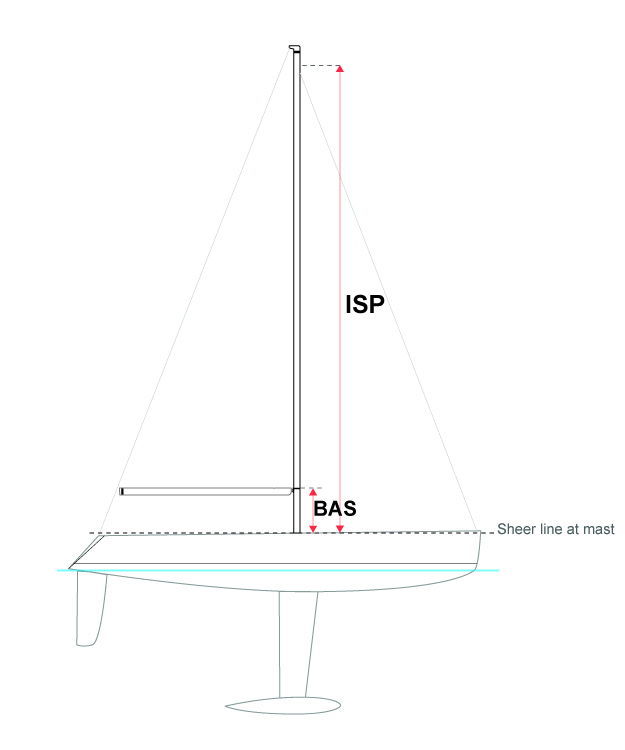 ISP Measurement
ISP Measurement
Mast profiles are measured for maximum dimensions above 0.5 * P transversely (MDT1) and longitudinally (MDL1) as well as for the minimum dimensions transversely (MDT2) and longitudinally (MDTL2). Taper length TL is the vertical distance from the upper black band to the point where maximum mast profile dimensions occurs. Thus, TL is 0 if mast is not tapered.
If there is a structure element of forestay attachment to the mast, then its distance from the aft side of the mast is measured as GO. Mast width MW at that height provides elements for the calculation of the actual intersection of the forestay with the front side of the mast.
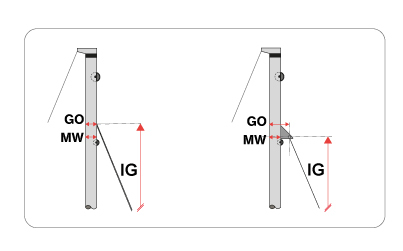 MW and GO measurement
MW and GO measurement
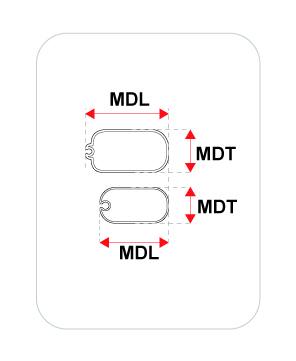 MDT and MDL measurement
MDT and MDL measurement
Mast weight (MWT) and mast centre of gravity (MCG) are important factor determining a boat's stability. It can be measured by weighing the mast at a single point and finding the actual centre of gravity, or by two separate weight measurements at the same points from which total weight and centre of gravity position are calculated.
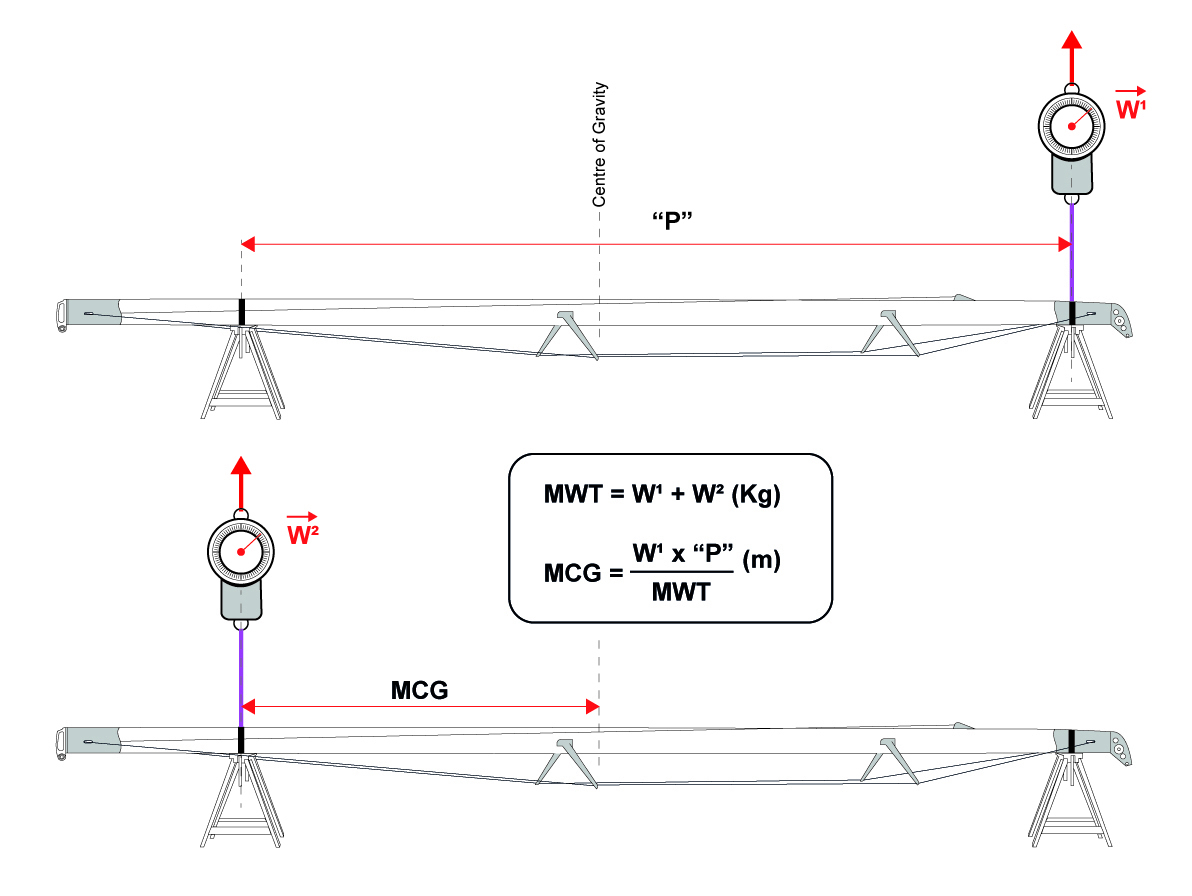
The mast is weighed with: forestay, backstay, spreaders, jumpers, shrouds, chain plates, runners, lights, antennae, wiring and other permanently fitted components all slack stretched down and secured with light material at the bottom of the mast. Excluded are: checkstays, halyards, boom vang and reefing lines.
If the mast is not weighed, then lightweight defaults for aluminium or carbon mast are used. Actual mast weight measurements will therefore always give a more favorable rating.
Boom
E is the measured distance from the aft side of the mast to the black band on the boom that limits the position to which mainsail foot may be extended. In the absence of the black band, it shall be measured to the point on the boom as aft as the mainsail clew can reach.
Boom diameter BD is measured as a vertical cross section.
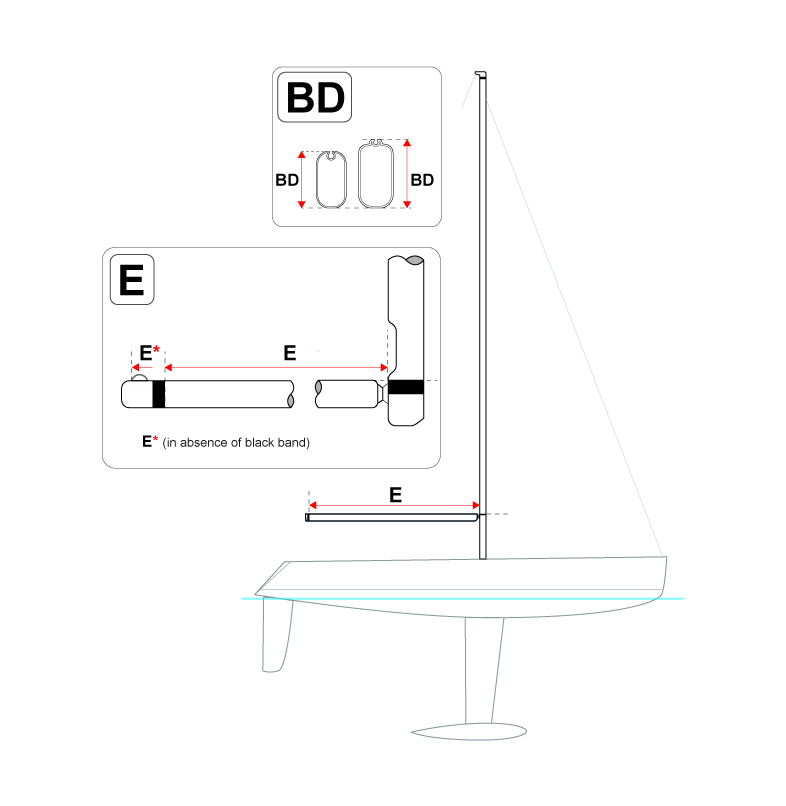
Spinnaker pole and bowsprit
Spinnaker pole length (SPL) the horizontal distance from the forward face of the mast spar, ignoring any fittings and tracks, measured on or near the centerline of the boat, to the extremity of the spinnaker pole. .
The tack point of spinnaker (TPS) when it is tacked on the boat's centerline is the distance from the foreside of the mast to the foremost point on which the asymmetric spinnaker or any headsail set flying can be tacked. If the bowsprit is retractable TPS shall be measured with it in its fully-extended position.
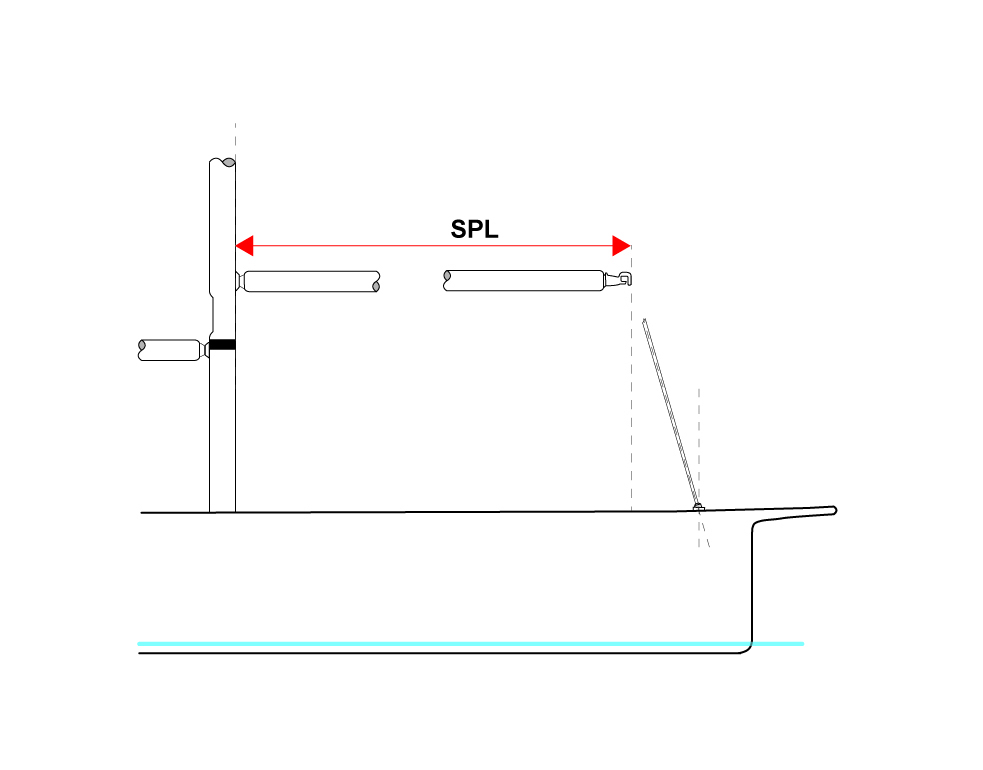 SPL measurement
SPL measurement
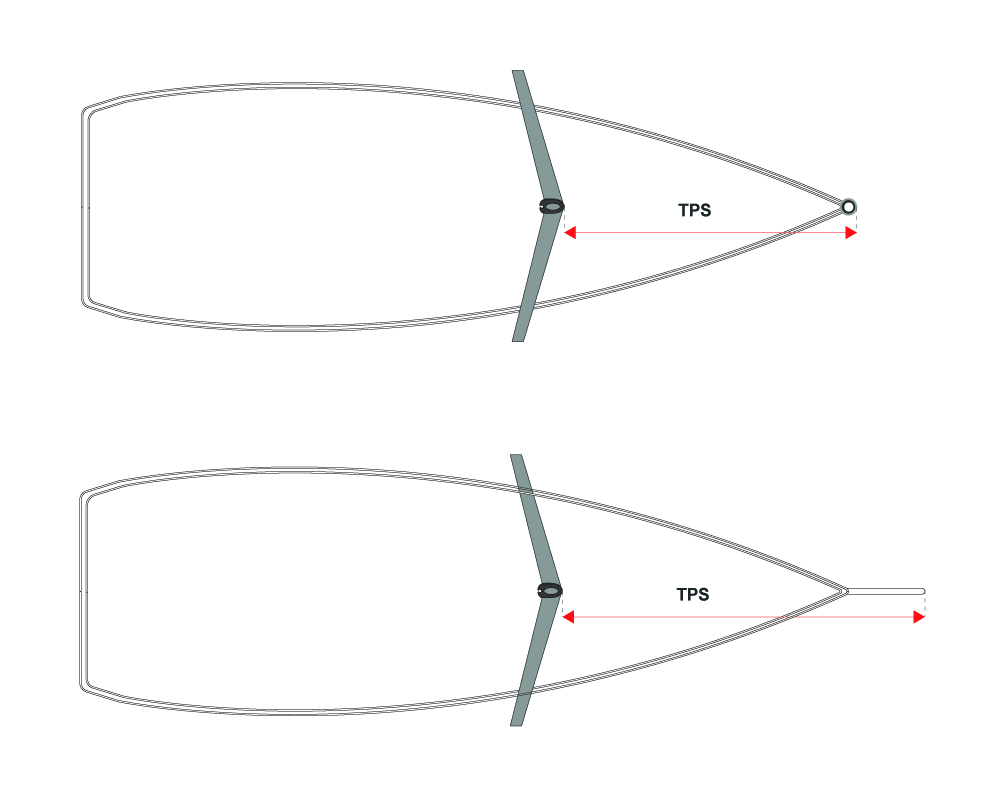 TPS measurement
TPS measurement
Other rig details
In addition to the measurements set above, the following rig details are also recorded:
- Inner stay, which may be adjustable or fixed
- Foresetay tension, which may be controlled by Forestay, Backstay, Both or be Fixed.
- Number of spreaders
- Number of runners
- Carbon mast and fiber rigging
- Mainsail furler
- Headsail furler
- Use of non-manual power for adjusting running rigging or spars
![Orc [STAGING]](/uploads/images/ORC-reflex-Blue-Navy-01.png)